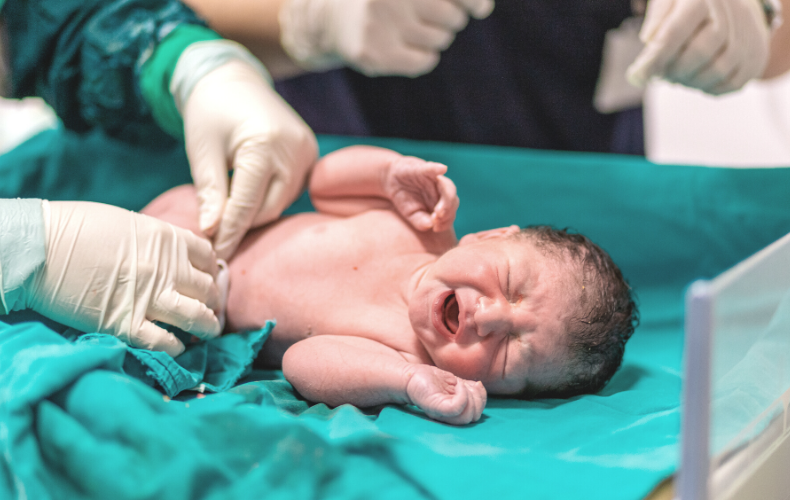
In this article, we are going to take a closer look at how placenta banking and amnion banking works. This includes an explanation of what happens during the collection process and how the placental cells and amnion are stored for later use.
The placenta is a valuable medical resource containing stem cells, growth factors, hormones, and other components with therapeutic value. Placenta banking and Amnion banking allows parents to cryogenically preserve the placental cells from the Chorionic Villi and amniotic membrane so that they are available for future use. Here is how the entire process works.
1. Signing up to Placenta Banking with a private stem cell bank
The first step involves contacting a private stem cell bank that provides placenta banking services. This contact can be made over the phone or by email.
Currently, Cells4Life is the only UK stem cell bank that offers placental cells and amnion storage. Once you make contact with Cells4Life, a representative will briefly explain how placenta banking works and answer any questions that you may have.
One of the decisions you will need to make when using placenta banking is choosing which parts of the placenta to save. There are two key components of the placenta which have therapeutic value which makes them suitable for storage – the outer layer (chorion villi) and the inner layer (amnion membrane).
The chorionic villi are small tree-like structures, which are rich in regenerative cells, including multipotent stem cells. The cells of the chorion villi are currently the subject of several clinical research projects which aim to treat conditions like arthritis, cerebral palsy, and diabetic ulcers.
The amniotic membrane is a thin layer of membrane which has potent healing properties. It has been used for treating burns, wounds, and ulcers since the early 20th century. There is some research to suggest that it may be useful for treating several other conditions including multiple sclerosis.
Cells4Life offers parents the option of storing either the amniotic membrane or both the amniotic membrane and chorion villi cells.
READ MORE ABOUT PLACENTAL CELLS & AMNION BANKING »
If you are interested in proceeding with placenta banking, the representative will gather some details from you. This will include the name of your obstetrician, the expected delivery date of your child, the location where you will be giving birth, and so on.
WATCH OUR LATEST PLACENTA BANKING VIDEO
2. Delivery of placenta banking collection kit
Once you have signed an agreement with Cells4Life and made an initial payment, you will be sent the collection kit. You will need to bring this with you to the hospital on the day of your delivery.
It is important to inform your obstetrician or midwife that you would like to collect the placenta to make sure that this will be done after the birth of your baby.
3. Delivery and placenta collection
On the day of delivery, you will need to contact your Cells4Life representative to inform them the birth is imminent. They will arrange to have a specialist courier ready to receive your placental tissue after your child is born.
If you are having a natural childbirth, the placenta will be collected after it has detached from the uterine wall and been delivered. This typically occurs about 30 minutes after your child has been born. An obstetrician, midwife, or any trained phlebotomist will take the placenta and place it into the collection kit which was provided.
If you are having a caesarian section, the obstetrician will make a cut in the amniotic sac surrounding the baby before removing it. The umbilical cord is then cut and the placenta is manually removed before being placed in the collection kit.
There is no risk to the mother or child during the collection of the placenta. The only difference compared to a normal birth is that the placenta is collected instead of being discarded as medical waste.
The collection kit is then picked up by the courier who will transport it to the Cells4Life lab in the UK for testing and processing.
4. Processing and storage
Once the placenta arrives at the laboratory, it will be cleaned and tested to ensure the amniotic membrane and placental cells are viable. It will then be stored in liquid nitrogen at a very low temperature. This keeps the tissue healthy until you require it.
5. Using the placenta cells
Parents have complete control over how the stored placental cells and amnion will be used. If your child or a member of your family has sustained an injury or is diagnosed with a disease and a stem cell transplant/treatment is an option, your stored sample will be made available upon your request.
Why choose Cells4Life?
Cells4Life is currently the only placenta storage bank in the United Kingdom. We currently have more than 150,000 cord blood samples stored. Other reasons to choose Cells4Life for placenta banking include:
- Multiple sample subdivisions and dual location storage
- Focus on maximising the number of cells to increase treatment opportunities
- Stem cell insurance is available
- A comprehensive range of services
- Year-round collection
- Dedicated specialised couriers
- Industry-leading technology
- DHA-licensed Facility in Dubai
- Fully licensed with the Human Tissue Authority (HTA)
- Accredited by American Association of Blood Banks (AABB)
READ MORE ABOUT THE CELLS4LIFE DIFFERENCE »
Contact Cells4Life for more information by calling +971 4 3116613 or send an email.


